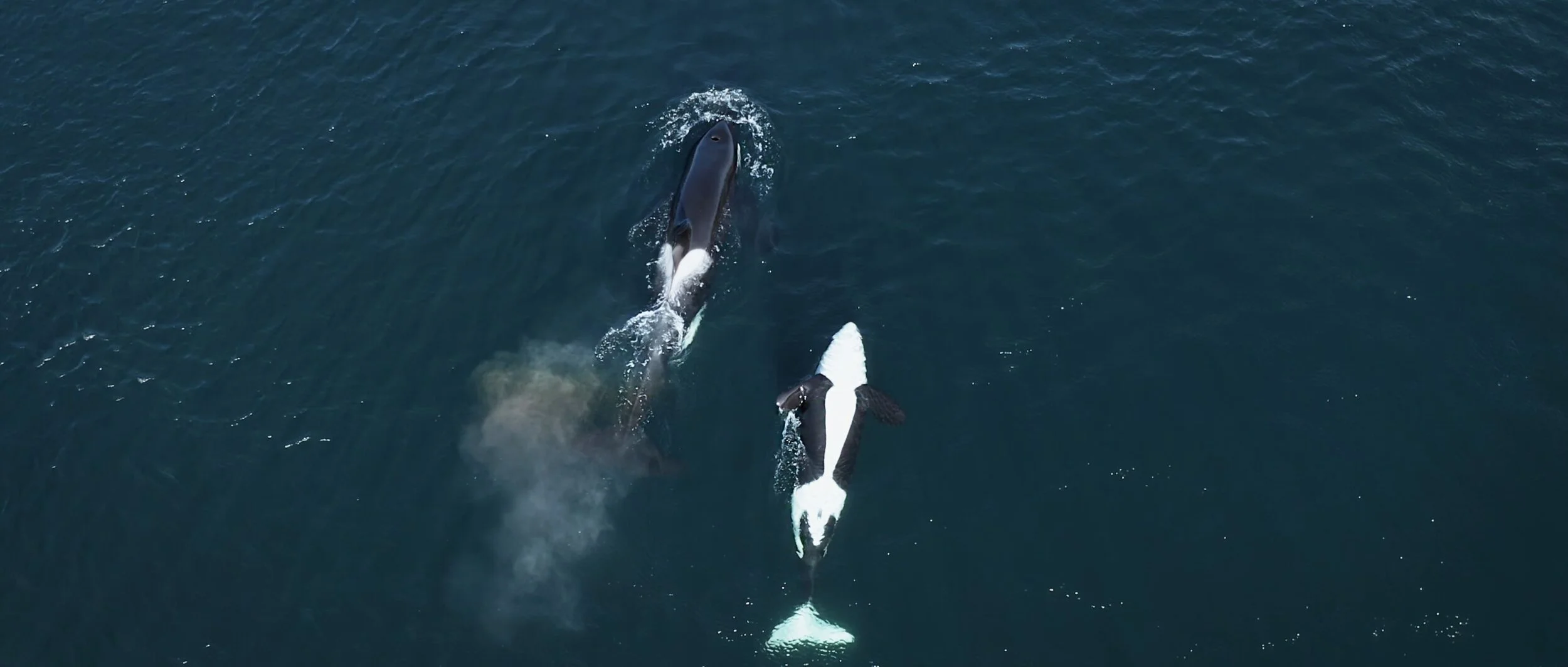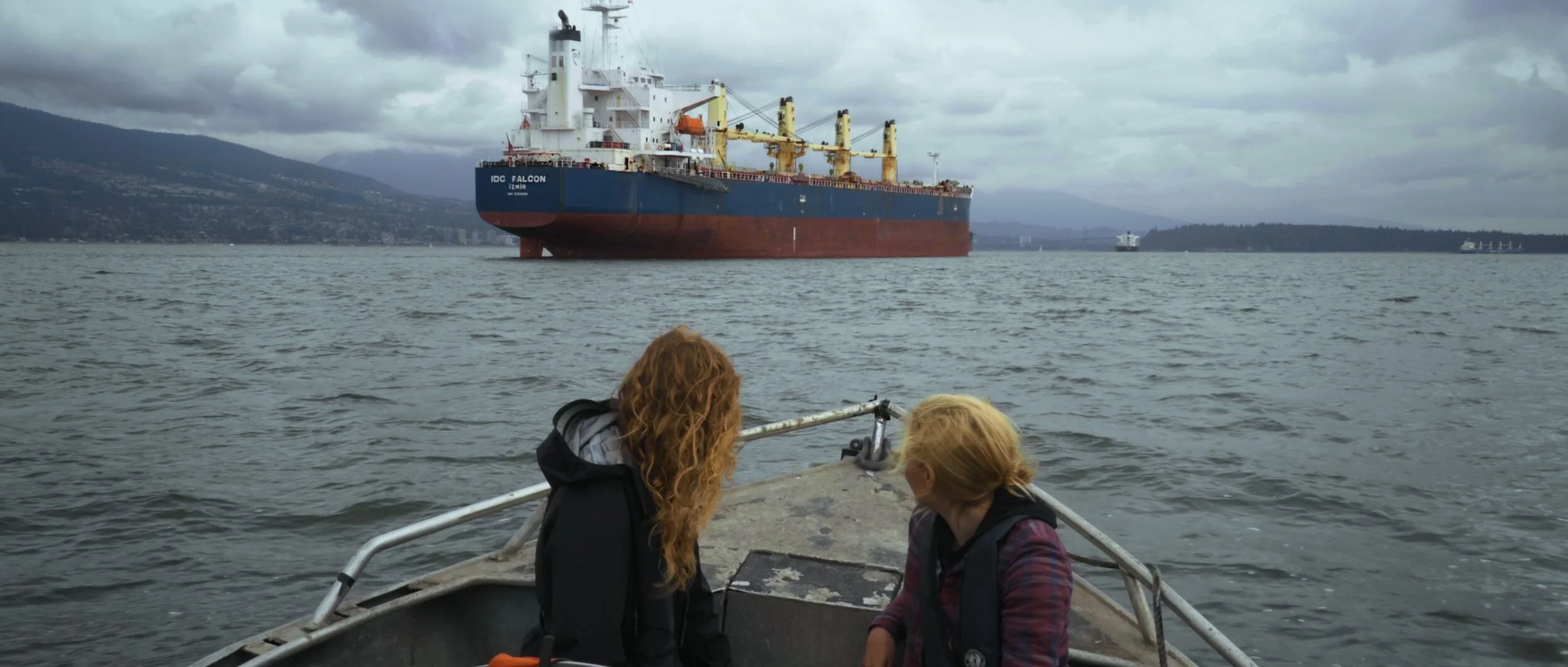Coextinction, at VIFF, dives deep into the crisis facing Southern Resident killer whales
Vancouver International Film Festival presents the Canadian premiere of Gloria Pancrazi and Elena Jean’s documentary
Coextinction explores the root causes of the decline in population of southern resident killer whales. Photo courtesy Coexistence Films.
J35, OR TAHLEQUAH, is the mother orca who pushed her dead calf with her head more than 1,600 kilometres in the summer of 2018, finally letting her baby drop to the ocean floor after 17 days. The heart-wrenching show of grief captured international attention, highlighting the extinction crisis that is threatening the Southern Resident killer whales found mostly off the coasts of British Columbia, Washington, and Oregon. There are only 74 left.
As this maternal act of mourning was unfolding, Gloria Pancrazi and Elena Jean had just started filming Coextinction, their full-length documentary that has its Canadian premiere at the Vancouver International Film Festival.
Filmed on the ancestral homelands of more than 15 First Nations in present-day Canada and the United States, Coextinction travels from J35’s sorrowful journey in and around the Salish Sea to Burrard Inlet to the Lower Snake Rivers and beyond as Pancrazi and Jean document their own learning journey, diving deeper and deeper into the multiple interconnected factors and forces that are threatening the iconic species.
Footage from that devastating drawn-out scene of J35 appears early on in Coextinction. With such a complex subject matter at hand—one that’s linked to Indigeneity, oil, climate, science, nature, greed, politics, pollution, colonization, and more—the film covers expansive ground, despite neither Jean nor Pancrazi having any formal training in filmmaking.
Common interests connected the two; they met in 2017 when Pancrazi was working for a conservation organization, monitoring the Southern Resident killer whales in the Salish Sea, and Jean, who had previously photographed and filmed endangered species around the world, had travelled to B.C. to learn more about the orcas for a wildlife conservation brand she started called One Species.
“At the beginning to some degree there was an amount of naivete—we wanted to figure out why the orcas were going extinct,” Jean says in a phone interview with Stir from her Tofino home. “We were really saddened by what we saw and saw that this was connected to so much more on the Coast—that being and including a rich history of environmental destruction on the Coast, that at the root, which was caused and continues to be caused by colonization and industrialization of the Coast, and the oppression of Indigenous peoples who have lived here for thousands and thousand of years before white settlers came. It’s so important to be taking a look at this bigger picture of interconnectedness and the systemic issues at hand and thus our need to pursue systemic solutions. I think conceptually people are starting to understand that idea of intersectional environmentalism…but it was really quite eye-opening.
“It’s very much passion-driven,” she adds of the project. “Passion has led the way, and that’s something I’m really proud of. Everyone who has worked on this—and so many people have—has done it done it out of passion and care and a true sense of mission.”
Gloria Pancrazi (left) and Elena Jean. Photo courtesy Coexistence Films
As directors, Pancrazi and Jean also take on the role of hosts, being both behind and in front of the camera throughout the film as they grapple with this question: as apex predators, the Southern Resident killer whales are an indicator species; what are they trying to tell us?
Their quest to answer it begins with the impact of noise disturbance in the Salish Sea; points them to the Trans Mountain Pipeline—and protests against it; and takes them to the Broughton Archipelago, where they connect with Alexandra Morton, a leading expert on the devastating impact of open-net pen salmon farms on wild Pacific salmon. They interview Indigenous leaders such as Will George (Swaysen), a Tsleil-Waututh resistance leader, and researchers such as Kenneth Balcom, senior scientist at the Centre for Whale Research on San Juan Island, who has been studying the marine mammals since 1976. The two begin to understand that saving the orcas means saving wild salmon. They look at the impact of Snake River dams, which block access to salmon habitat, and of Canada’s Indian Residential School system, which aimed to destroy Indigenous culture—to which salmon is central.
Their ongoing discoveries all take place against the stunning backdrop of Pacific Northwest land and sea, with the team of cinematographers, aerial cinematographers, and videographers including Nicholas Castel and Victoria Obermeyer. Additional footage came from Morton, Sea Shepherd Conservation Society, and underwater photographer/filmmaker Eiko Jones, among others. The moving and at times haunting original score by Julien Verschooris has already been nominated for best Original Music Score at the Jackson Wild Media Awards.
The directors’ hope for Coextinction is that it wakes more people up to the unfolding crisis and to the fact that time is running out to save the whales.
“It tells this incredible example of how connected an ecosystem is and also how connected we are,” Jean says. “Everything we do has fallout effects into this world at large. That’s where the name comes from: coextinction. Species don’t go extinct in isolation. They’re always connected.
“We want people to be motivated to action,” she says. “We’re in this crazy time right now and it requires bold action, and I think we want people to feel inspired and motivated to pursue that bold action….Yes, it’s great to recycle but we need to be working on these more systemic solutions, and one of those being listening to and supporting the movements of Indigenous people and land defenders, being allies wherever possible.”
For more information, see VIFF or Coextinction.














